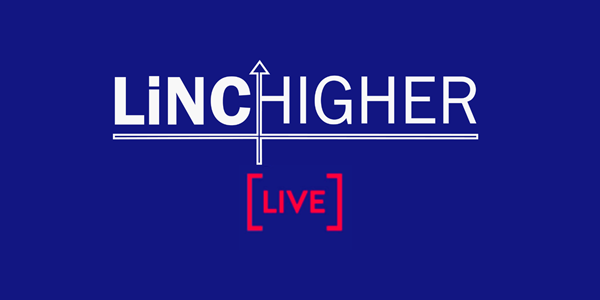How Does Student Finance Work? A UK Guide
Paying for University or College
Sending a child to university or starting a degree yourself is a significant milestone, but the financial side can feel overwhelming. Many students and parents worry that higher education is unaffordable.
However, the reality is that the English student finance system is designed to be accessible. Rather than a commercial debt, it is better viewed as a manageable investment in the future. The single most important fact to remember is this:
Student loan repayments are based entirely on what you earn after you graduate, not the total amount you borrow.
You will not pay back a single penny until your income rises above the official repayment threshold. This guide breaks down everything you need to know about fees, loans, and the upcoming changes to the system.
1. Tuition Fees and Funding
Tuition fees are the amount universities charge each year to cover the cost of the course, including teaching, exams, and facilities.
The Key Facts:
- The Fee Cap: For the 2025/26 academic year, universities in England can charge a maximum of £9,535.
- Full Coverage: Eligible students can apply for a Tuition Fee Loan that covers 100% of these costs.
- No Upfront Costs: The Student Loans Company (SLC) pays this money directly to the university. You do not handle this cash, and you do not need to pay fees upfront.
- Not Means-Tested: Crucially, the Tuition Fee Loan is not means-tested. This means the amount you receive doesn’t depend on your household income. Every eligible student can borrow the full fee amount, regardless of their parents' earnings.
The Future of Funding: The Lifelong Learning Entitlement (LLE)
The government is introducing a major transformation to how student finance works, known as the Lifelong Learning Entitlement (LLE). This is set to launch for courses starting from January 2027.
While the current system focuses on full degrees, the LLE introduces a more flexible approach. Here is how it works:
-
A "Personal Tuition Fee Bank Account": Imagine a virtual bank account allocated to you. It will contain an entitlement worth the equivalent of 4 years of post-18 education (currently valued at £37,000 in today’s tuition fees).
-
Flexible Learning: You won't have to use this all at once for a 3-year degree. You can "withdraw" from this account to pay for specific modules, short courses, or a full degree at any point during your working life (up to age 60).
-
Building Qualifications: This allows learners to build up qualifications over time, retraining or upskilling as their career evolves, rather than committing to one long block of study immediately after school.
2. Maintenance Loan: Covering Living Costs
While tuition fees are paid directly to the university, you will also have living expenses—accommodation, food, transport, and socialising. The Maintenance Loan is designed to help with these costs.
Unlike the Tuition Fee Loan, the Maintenance Loan is means-tested. The amount you receive is calculated based on two factors:
- Household Income: This is usually the pre-tax income of the parents or partner the student lives with. The system assumes that higher-earning households will contribute financially to the student's living costs, so the loan offered is lower.
- Living Situation: The loan rate changes depending on where the student lives while studying:
-
-
-
Living at home with parents.
-
Living away from home (outside London).
-
Living away from home (in London) – This is the highest rate to cover the capital’s higher costs.
-
-
Payment: This money is paid directly into the student's personal bank account in three instalments, usually at the start of each term.
3. Who provides student loans?
It's important to know that student finance in the UK does not come from a private bank. All loans are provided by the Student Loans Company (SLC), a secure, non-profit organisation owned by the UK government.
The SLC is responsible for managing the entire loan system. For students living in England, the application process itself is handled by a specific service called Student Finance England (SFE), which is the public-facing part of the SLC.
Because policies and figures can change, we always recommend getting information directly from the official source. The government website has the most accurate and up-to-date advice.
Student loans are provided by the Student Loans Company (SLC). SLC is a non-profit making, government-owned organisation. For students living in England, applications for a student loan are made through Student Finance England.
The most current and up to date advice can be found on the SLC website:
Visit the Official Student Loans Company
You can read more about the changes to student loans here
4. Repaying your student loan (Plan 5)
For all new students starting courses from 1st August 2023 onwards, repayments fall under Plan 5. The system is designed to be affordable and safeguards low earners.
-
When Repayments Start: You only begin repaying the April after you leave your course, and only if you earn above the threshold.
-
The Threshold: The current earnings threshold is £25,000 a year. If your income drops below this, repayments stop automatically.
-
The Rate: You repay 9% of your income above the threshold (not your total income).
-
Automatic Deductions: Repayments are taken automatically from your salary via the tax system (PAYE). You don't need to manually transfer money.
Example: If you earn £27,000 a year, you are £2,000 over the threshold. You repay 9% of that £2,000. Total repayment: £180 a year (only £15 a month).
Loan Write-Off: If you have not repaid your loan in full after 40 years, the remaining balance is completely cancelled.
For the latest official figures, always check the government's student finance website.
5. Student Loan Interest
Under Plan 5, the interest rules are simpler than in previous years.
-
RPI Only: The interest rate is linked to the Retail Price Index (RPI), which is a measure of inflation.
-
No Real-Terms Growth: This ensures the loan effectively retains its real value rather than growing significantly. The interest rate does not change based on how much you earn.
-
Impact: Interest only affects the total balance of the loan, not your monthly repayments (which are fixed at 9% of earnings). Since any unpaid balance is written off after 40 years, many graduates will never pay the full interest accrued.
Find Out more
GOV.UK www.gov.uk/repaying-your-student-loan/what-you-pay
Student Loans Company http://media.slc.co.uk/repayment/qsg
6. How to apply?
Applications for the Tuition Fee Loan and Maintenance Loan are done in one online process via GOV.UK.
Top Tips for a Smooth Application:
-
Apply Early: Applications typically open in Spring (around March). It takes at least six weeks to process, so apply immediately to ensure money is ready for the start of term.
-
No Offer Needed: You do not need a confirmed university place to apply. Use your preferred choice; you can easily update the details online later if you go to a different university.
-
Reapply Annually: Student finance is not a one-time application; you must reapply for every year of your course.
Managing Your Application
Once you have submitted your application via your Student Finance England (SFE) account, follow these steps:
-
Track Progress: Log in regularly to check for updates.
-
Upload Evidence: If SFE asks for proof of identity or income, upload it immediately to avoid payment delays.
-
Register: You must officially register at your university on your first day/week. The university then triggers the release of your money.
Here is your step-by-step guide:
Step 1: Get Your Application Approved
Your main focus is now on tracking the application's progress and providing any information SFE needs.
-
Track Your Status: Log in to your SFE online account regularly to check the progress.
-
Provide Evidence Promptly: SFE may request more evidence (e.g., proof of identity or household income). Upload any required documents immediately to avoid delays.
-
Ensure Parental Support: If you applied for the means-tested Maintenance Loan, make sure your parents or partner have submitted their income details to support your application.
Step 2: Prepare for Your First Payment
Once your application is approved, you will receive a letter or notification confirming your loan amounts. Before any money can be released, you must:
-
Complete University Registration: You must officially register on your course at your chosen university or college.
-
Double-Check Your Bank Details: Log in to your SFE account and confirm your bank details are correct. This is where your Maintenance Loan will be sent.
Step 3: Receiving Your Funds
Your student finance is paid in two separate ways:
-
Tuition Fee Loan: This is paid directly from the Student Loans Company to your university. You will not receive this money yourself.
-
Maintenance Loan: This is paid into your personal bank account in three instalments, typically at the start of each term. You can view your payment schedule in your online account.
Step 4: Your Ongoing Responsibilities
Throughout your degree, you must keep your SFE account up to date. You need to inform SFE immediately if you:
-
Change your name, address, or bank details.
-
Change your university or course.
-
Suspend your studies or leave your course.
7. Parental Involvement
If a student applies for the means-tested Maintenance Loan, SFE needs to assess household income.
-
Student Starts: The student provides their parent/carer’s email address in the application.
-
Secure Link: SFE emails the parent a link to create a separate, secure account.
-
Privacy: The parent submits their National Insurance number and income details (from P60 or tax returns). This is verified confidentially with HMRC. The student does not see the parent’s financial details.
Independent Students
Some students are assessed on their own income rather than their parents'. You may qualify as an "Independent Student" if you:
-
Are a care leaver.
-
Are estranged (have no contact) from your parents.
-
Are married, have children, or have supported yourself financially for 3+ years.
Specific evidence is required for these categories. Visit the Student Finance England website for detailed guidance on estrangement and independent status.
Student Finance England - Estranged
Find out more about the process and what you need to provide
GOV.UK: Student finance - GOV.UK
You can also use a Student Loan Calculator.
Save the Student - Useful Tools
Good to know...
Parent and Carer Information
Navigating student finance can feel complex. Here are clear, direct answers to the most common questions and concerns for parents and carers.
1. Should I take out a personal loan to help my child?
It is strongly advised not to. A student loan is specifically designed for a student's circumstances and has vital protections that commercial loans do not:
-
Repayments are linked to your child's income, not the amount borrowed.
-
Repayments automatically stop if their earnings fall below the threshold.
-
The debt is eventually written off.
A personal bank loan will require fixed monthly repayments regardless of your child's employment status and offers none of these safeguards, making it a much riskier and more expensive option.
2. Do I have to provide my income details?
No, you are not obligated to. All eligible students can receive a basic amount of Maintenance Loan without any household income information.
However, if you do not provide your financial details, your child cannot be assessed for any loan amount above this minimum. By confidentially providing your information, you allow Student Finance England (SFE) to see if your child is eligible for a larger Maintenance Loan, which can make a significant difference to their budget at university.
3. What happens if our household income suddenly drops?
SFE has a specific process for this. If your total household income has dropped by 15% or more since the tax year you originally provided, you can apply for a 'Current Year Income (CYI) assessment'.
This allows SFE to recalculate your child's entitlement based on your current financial situation, which could lead to them receiving more funding for that academic year.
4. Am I legally responsible for my child's student loan debt?
No. Absolutely not. A student loan is a contract solely between the student and the government's Student Loans Company. You are not a guarantor and are never liable for the debt.
Repayments are collected automatically from your child's salary once they are earning above the threshold. The entire remaining loan balance is written off after 40 years, regardless of how much is left.










